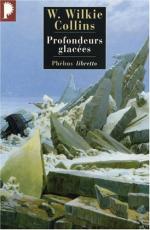|
This section contains 3,948 words (approx. 14 pages at 300 words per page) |

|
SOURCE: “The Fallen Angels of Wilkie Collins,” in International Journal of Women's Studies, Vol. 7, No. 4, September/October, 1984, pp. 343-51.
In the following essay, Frick discusses Collins's ambivalent treatment of fallen women in his novels.
Introduction
In her recent study of the Victorian heroine, Woman and the Demon, Nina Auerbach argues that the fallen woman, far more than the angelic one, galvanized the mid- and late-nineteenth-century imagination. This assertion is especially true when we examine the fiction of Wilkie Collins, friend and protegé of Dickens, sensation novelist par excellence, and grandfather of the modern English detective novel. While Collins at times upheld conventional notions of womanhood through pale-cheeked and fainthearted heroines, such as Laura Fairlie in The Woman in White, his true emotional and intellectual affinities were with the fallen angels of his time—prostitutes, mistresses, murderesses, adulteresses, divorcées, and other female deviants from “respectable” society. While he...
|
This section contains 3,948 words (approx. 14 pages at 300 words per page) |

|


